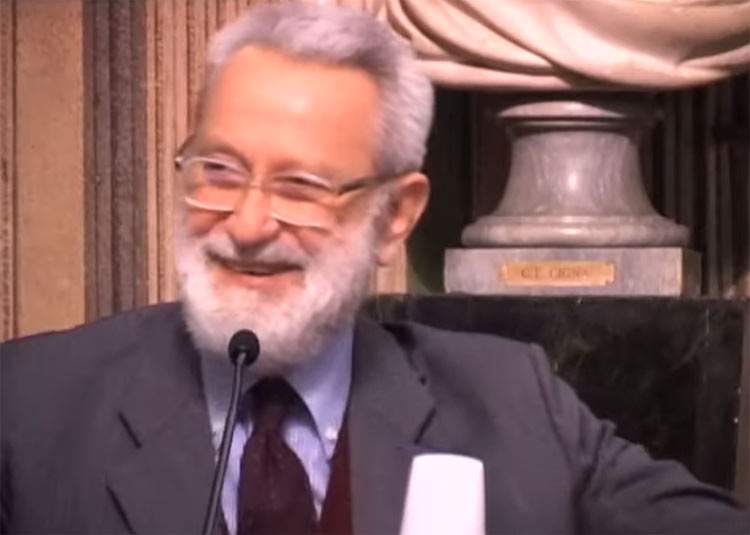Art historian Giovanni Romano, a leading expert on the Lombard and Piedmontese Renaissance, passed away on Christmas Eve in Turin. He had been ill for some time, so much so that his last public appearance was in December 2017. Born in Carmagnola on Feb. 20, 1939, Romano, who passed away at the age of 81, was a teacher to generations of art historians: he had started working in his thirties, in 1970, at the Piedmont Superintendency, where he remained until 1986 when he moved on to direct the Art in Piedmont editorial series of the Fondazione Cassa di Risparmio di Torino before, the following year, leaving “field” work and moving to teaching. From 1987 Romano thus became a full professor at the University of Turin where he taught history of art criticism, then medieval art history and then modern art history.
As an official of the Piedmont superintendency, he is best remembered for the refurbishment of the Galleria Sabauda in Turin, an ambitious project that lasted long even after Romano left his post. An ideal pupil of Roberto Longhi, Romano wrote seminal pages on artists such as Vincenzo Foppa, Bernardo Zenale and Bramantino with regard to the Lombard Renaissance, and equally dense contributions on Piedmontese authors such as Defendente and Gaudenzio Ferrari. Romano was also a member of the Deputazione subalpina di storia patria, the Accademia delle Scienze in Turin, a Clementine academic in Bologna, and a member of the editorial board of L’Indice dei libri del mese. Several of his books and exhibitions: it is worth mentioning here the review Vincenzo Foppa. Un protagonista del Rinascimento that he curated together with Giovanni Agosti and Mauro Natale in 2002, the one on Gaudenzio Ferrari and his school curated in 1982, and the fundamental book Rinascimento in Lombardia published by Feltrinelli in 2011.
The latest legacy, in 2019, is the republication on the occasion of his eightieth birthday, for Scalpendi editore, of a 1999 lecture of his for high school students, entitled Una lezione per aspiranti storici dell’arte. Here are some excerpts from that text: “How to read and understand a painting: this is an experience that almost everyone has when entering a museum and being confronted with a work of art he has never known. The visitor, unless he or she lies to himself or herself, has difficulties: he or she does not have a set path to follow to say what he or she feels in front of this image; he or she cannot immediately discover what is the logical thread that he or she must follow in front of a figurative testimony that is silent: this is not a person to ask where are you coming from? The work does not reveal it to you except in a mute way, through stylistic characters. [...] Attribution constitutes [...] the basic philological act of confidently accessing the reading of works of art. The sudden encounter with a work of art is an immediate provocation for our memory and sensibility, but it requires the possession of tools guaranteed by an absolute familiarity with a substantial number of reference documents. It is clear that those who take their first steps in the history of art do not have this kind of prior baggage; they must create it for themselves by memorizing in good order, and with multiple accesses, places, stylistic seasons, cultural exchanges, itineraries of protagonists and gregari so as to then move with proper attention in the face of unexpected questions: we must not allow ourselves to be confused, through too much haste, between our memory of Masaccio and that, distinct but not independent, of Filippo Lippi. [...] The art historian, before making historical and critical judgments, must verify the reliability of the work in front of him, which perhaps comes to him with a bad attribution, or with an irrelevant documentary link, or, even worse, counterfeited by restorers or forgers. The art historian’s profession demands in advance integral checks of geographical context and date, those ascertainments that constitute the figurative document as such, historically identified and reliable in the first place.”
 |
| Farewell to art historian Giovanni Romano, great expert on Lombard Renaissance |
Warning: the translation into English of the original Italian article was created using automatic tools. We undertake to review all articles, but we do not guarantee the total absence of inaccuracies in the translation due to the program. You can find the original by clicking on the ITA button. If you find any mistake,please contact us.